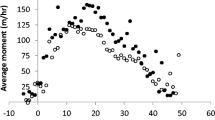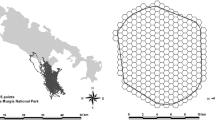Abstract
GPS collars for wildlife provide a large amount of spatio-temporal location data and are frequently equipped with sensors that record the animal-level environmental temperature at a schedulable sampling frequency. The simultaneous collection of environmental temperature and animal location may contribute not only to deepen the understanding of animal behavior in different climatic conditions, but also to increase the knowledge of climate features in inaccessible areas. The measurement of environmental temperature provided by the sensors, however, can be biased by several factors (e.g., surface temperature of the animal, direct solar radiation, precipitation), so in-depth studies are required to verify the correlation. The aim of this study was to identify an equation for correcting the collar-recorded temperature data, allowing to improve and refine the results obtained by the analysis of spatial data and to highlight the environmental factors having the greatest impact on the accuracy of the measures. Temperature data from GPS collars were obtained within a research on spatial behavior on 11 hinds while spatialized temperature data were obtained from LAMMA-IBIMET dataset. These data showed high correlation and an identical trend, although the GPS collar temperature data was always higher. This model could represent a tool to obtain an accurate measurement of temperatures in complex geographical areas with wild animals but low density of weather stations. The availability of corrected temperature data, recorded simultaneously with the animal location, could be useful for a more accurate comprehension of animal behavior in free-ranging conditions, both in case of forthcoming studies and to valorize existing datasets.



Similar content being viewed by others
References
Adrados C, Baltzinger C, Janeau G, Pepin D (2008) Red deer resting places characteristics obtained grom GPS data in a forest habitat. Eur J Wildl Res 54(3):487–494
Apollonio M, Brivio F, Rossi I, Bassano B, Grignolio S (2013) Consequences of snowy winters on male mating strategies and reproduction in a mountain ungulate. Behav Process 98:44–50
Bates D, Maechler M, Bolker B, Walker S (2015) Fitting linear mixed-effects models using lme4. J Stat Softw 67(1):1–48. https://doi.org/10.18637/jss.v067.i01
Berger A, Courtiol A (2013) The radio-collared animal as a moving weather station? Belgium, 263
Börger L, Franconi N, Ferretti F, Meschi F, De Michele G, Gantz A, Coulson T (2006) An integrated approach to identify spatiotemporal and individual-level determinants of animal home range size. Am Nat 168:471–485
Cagnacci F, Boitani L, Powell RA, Boyce M (2010) Animal ecology meets GPS-based radiotelemetry: a perfect storm of opportunities and challenges. Phil Trans R Soc B 365:2157–2162. https://doi.org/10.1098/rstb.2010.0107
Coulson T, Catchpole EA, Albon SD, Morgan BJ, Pemberton JM, Clutton-Brock TH, Crawley MJ, Grenfell BT (2001) Age, sex, density, winter weather, and population crashes in Soay sheep. Science 292(5521):1528–1531
Crocetti C, Ponzetta MP, Minder I, Messeri A, Cervasio F, Argenti G, Maccelli S (2010) Analysis of land utilisation by red deer in the Apennine Mountains, vol 15. European Grassland Federation, Kiel, pp 265–267
Ericsson G, Dettki H, Neumann W, Arnemo JM, Singh NJ (2015) Offset between GPS collar-recorded temperature in moose and ambient weather station data. Eur J Wildl Res 61(6):919–922
Fox J (2002) Linear mixed models. Appendix to An R and S-PLUS Companion to Applied Regression
Grotan V, Saether BE, Filli F, Engen S (2008) Effects of climate on population fluctuations of ibex. Glob Chang Biol 14:218–228
Hebblewhite M, Haydon DT (2010) Distinguishing technology from biology: a critical review of the use of GPS telemetry data in ecology. Phil Trans R Soc B 365:2303–2312
Messeri A, Becciolini V, Messeri G, Morabito M, Crisci A, Orlandini S, Ponzetta MP (2015) Influence of climatic and local environmental conditions on deer: comparison between air temperatures measured by a weather station and GPS collars. IX International Symposium On Wild Fauna Košice:159–161
Morecroft MD, Taylor ME, Oliver HR (1998) Air and soil microclimates of deciduous woodland compared to an open site. Agric For Meteorol 90(1–2):141–156
Morellet N, Bonenfant C, Börger L, Ossi F, Cagnacci F, Heurich M, Kjellander P, Linnel JDC, Nicoloso S, Sustr P, Urbano F, Mysterud A (2013) Seasonality, weather and climate affect home range size in roe deer across a wide latitudinal gradient within Europe. J Anim Ecol 82(6):1326–1339
Mysterud A, Østbye E (1999) Cover as a habitat element for temperate ungulates: effects on habitat selection and demography. Wildl Soc Bull 27(2):385–394
Mysterud A, Yoccoz NG, Langvatn R, Pettorelli N, Stenseth NC (2008) Hierarchical path analysis of deer responses to direct and indirect effects of climate in northern forest. Phil Trans R Soc B 363(1501):2357–2366
Ossi F, Gaillard JM, Hebblewhite M, Cagnacci F (2015) Snow sinking depth and forest canopy drive winter resource selection more than supplemental feeding in an alpine population of roe deer. Eur J Wildl Res 61(1):111–124
Pettorelli N, Mysterud A, Yoccoz NG, Langvatn R, Stenseth NC (2005) Importance of climatological downscaling and plant phenology for red deer in heterogeneous landscapes. Proc R Soc Lond B Biol Sci 272:2357–2364
Ponzetta MP, Sacconi F, Crocetti C, Cervasio F, Minder I (2009) GPS/GSM collars monitoring of red deer in the Tosco-Emiliano Apennine Mountains. Ital J Anim Sci 8(2):646–648
R Core Team (2015) R: a language and environment for statistical computing. R Foundation for Statistical Computing, Vienna, Austria Version 3.1.3. http://www.R-project.org
Street GM, Rodgers AR, Fryxell JM (2015) Mid-day temperature variation influences seasonal habitat selection by moose. J Wildl Man 79:505–512
Strohmeyer DC, Peek JIM, Bowlin TR (1999) Wapiti bed sites in Idaho sagebrush steppe. Wildl Soc Bull 27:547–551
Thornton PE, Running SW, White MA (1997) Generating of daily meteorological variables over large regions of complex terrain. J Hydrol 190:214–251. https://doi.org/10.1016/S0022-1694(96)03128-9
Thornton PE, Hasenauer H, White MA (2000) Simultaneous estimation of daily solar radiation and humidity from observed temperature and precipitation: an application over complex terrain in Austria. Agric For Meteorol 104:255–271. https://doi.org/10.1016/S0168-1923(00)00170-2
Thornton PE, Thornton MM, Mayer BW, Wei Y, Devarakonda R, Vose RS, Cook RB (2016) Daymet: daily surface weather data on a 1-km grid for North America, version 3. ORNL DAAC, Oak Ridge. https://doi.org/10.3334/ORNLDAAC/1328
Tveraa T, Stien A, Bårdsen BJ, Fauchald P (2013) Population densities, vegetation green-up, and plant productivity: impacts on reproductive success and juvenile body mass in reindeer. PLoS One 8(2):e56450. https://doi.org/10.1371/journal.pone.0056450
Van Beest FM, Vander Wal E, Stronen AV, Brook RK (2013) Factors driving variation in movement rate and seasonality of sympatric ungulates. J Mammal 94(3):691–701
Author information
Authors and Affiliations
Corresponding author
Rights and permissions
About this article
Cite this article
Messeri, A., Becciolini, V., Messeri, G. et al. Wild ungulates and environmental temperature: analysis on the possible utilization of data from sensor placed on GPS collars. Int J Biometeorol 63, 293–300 (2019). https://doi.org/10.1007/s00484-018-01662-1
Received:
Revised:
Accepted:
Published:
Issue Date:
DOI: https://doi.org/10.1007/s00484-018-01662-1




